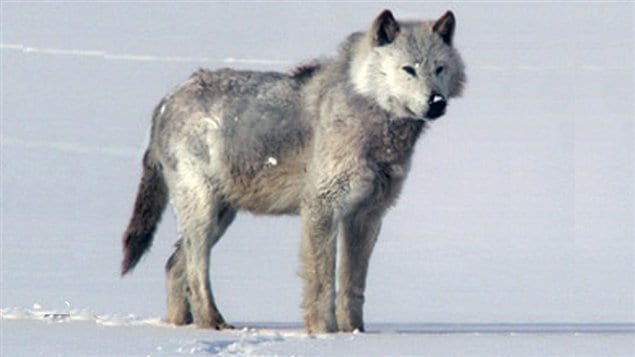Almost two decades ago, grey wolves were captured in Alberta and transplanted to Yellowstone National Park in the US. The park covers the northwest corner of Wyoming with smaller areas in the states of Montana and Idaho

Now it seems the wolves may be doing too well for a human population who has lived without them for about 70 years.
Paul Paquet, is a senior scientist at the Raincoast Conservation Foundation and adjunct professor at the University of Victoria, on Canada’s west coast. He says the successful re-introduction of wolves into what had been their natural habitat shows that such restoration of ecosystem balance can be done.
In 1995 14 wolves were captured and let loose in the northern area of the park, 17 others followed the next year.
Now the population is estimated at over 1700 in the northern rockes with about 500 in the park itself. With the return, ranchers however are calling for measures to curtail the wolves due to livestock predation.
As ranching expanded in the late 1800.s and early 1900,s hunting had wiped out the original wolf population by about 1926, leaving the ecosystem in the region for decades without this top tier predator.
The idea to re-introduce wolves into the vast park was to re-balance the ecosystem. Scientists had discovered a number of changes such as the wolves relation to Aspen and willow tree growth and how so many things are interconnected. With the wolves gone, elk multiplied and were eating the young shoots preventing new trees from growing as older ones died off. The beaver population had also greatly declined as willows along streams were fewer.
The return of the wolves has reduced the elk, allowed more normal forest conditions, along with shrub and and berry growth. This has meant increased nourishment and a larger and healthier bear population, along with an increased beaver population.
However under pressure from ranchers and farmers over livestock predation, the US Fish and Wildlife Service turned wolf management over to Montana and Idaho and 8 other states and 2008 lifted the “endangered” status for grey wolves. Montana held its first legal hunt the next year.
Last year the US agency proposed lifting the endangered and threatened status of grey wolves across the country
Noah Greenwald of the Centre for Biological Diversity, says “Several states have enacted aggressive hunting and trapping seasons,” adding de-listing of the grey wolves is premature.
He said people have prejudicial views against wolves and are putting pressure on American politicians for the hunt.
In Alberta in western Canada, a similar debate is taking place as some claim the wolves are taking down popular big-game animals. In neighbouring British Columbia the wolf population is at an historic high, while moose and caribou populations are at historic lows. The B.C management plan is not suggesting bounties on wolves, but hasn’t ruled out a cull either.
The US Fish and Wildlife service public input on the matter ended last month and the agency says it will make a decision on the national status listing of wolves later this year.







For reasons beyond our control, and for an undetermined period of time, our comment section is now closed. However, our social networks remain open to your contributions.